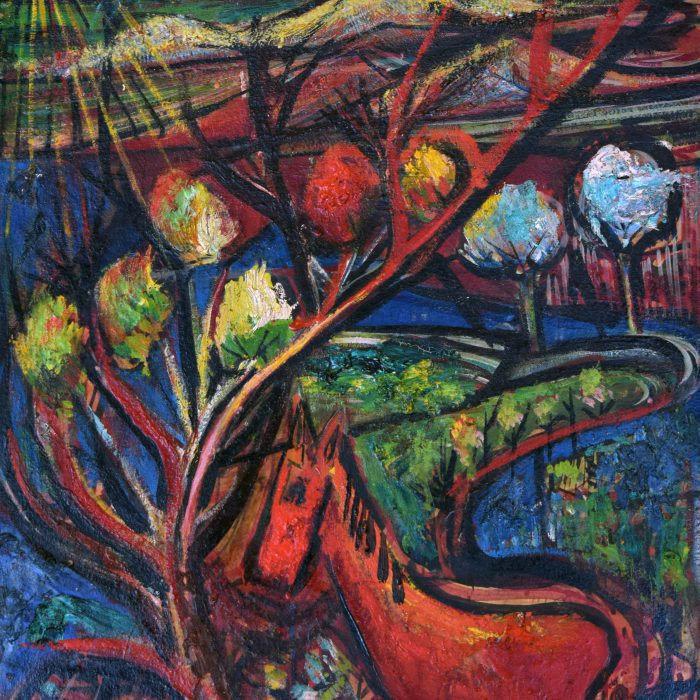Red Horse
Nahum Tsachbasov (Russia 1899–1984 New York)
New York, 1944
Oil on canvas, h. 14 11/16 x w. 11 7/16 in.
B’nai B’rith Klutznick National Jewish Museum Collection, 2015.17.116
Born in Azerbaijan, Russia, Tschacbasov immigrated to the United States with his family in 1907 and grew up in the Chicago slums. He studied electrical engineering, then served in the Navy, where he was deeply impacted by the light of the North Sea. He earned a business degree and became successful as an accountant and efficiency expert. In the late 1920s, Tschacbasov became increasingly interested in painting and drawing as a release from the pressures of his work life. His first encounters with modern art were the works of expressionist artists Cézanne, van Gogh, and Rouault. In the early 1930’s he moved to New York and then to Paris, to be in the great centers of emerging art, and to study with renowned artists. His paintings of the 1930s reflected the social and political preoccupations of the times and he received considerable critical attention for his powerful dramatic satirical depictions of social injustice. In the 1940s, he gained wider recognition when his style evolved into a fusion of Cubism and Surrealism. Drawing on the influence of emerging psychological theory about dreams and reality, Tschacbasov created a kind of fairy-tale world in landscapes like Red Horse, where perspective is flattened and color is expressive and vibrant. His work from this period has been compared to that of his contemporary, Marc Chagall. Through the 1950s, the artist’s style became increasingly abstract.
A uniquely transformative artist, he worked until his death in 1984. Highly successful and in great demand during his lifetime, he was spoken of and exhibited with Pablo Picasso and Alexander Calder. A 2011 retrospective of his work describes Tschacbasov as “one of the sleeping giants of the contemporary art world.”

